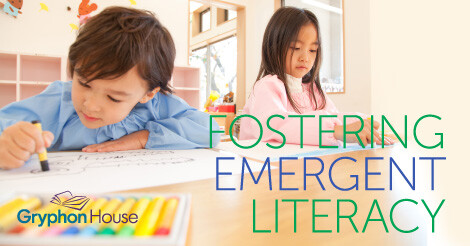Learning to write is one of the largest milestones in childhood learning. Aside from talking, it is the most important language skill, and it opens the door for many new modes of communication. As soon as they near school age, emergent readers are often instructed to complete repetitive letter copying in an effort to quickly develop their writing skills. This overlooks words being used to express ideas—the core purpose of written language. Emergent readers and writers must first be taught the symbolic use of language before they can fully grasp its lexicography.
Learning to write is one of the largest milestones in childhood learning. Aside from talking, it is the most important language skill, and it opens the door for many new modes of communication. As soon as they near school age, emergent readers are often instructed to complete repetitive letter copying in an effort to quickly develop their writing skills. This overlooks words being used to express ideas—the core purpose of written language. Emergent readers and writers must first be taught the symbolic use of language before they can fully grasp its lexicography.
Below are some emergent literacy activities from Rebecca Olien and Laura Woodside’s Playful Writing that will help strengthen children’s symbolic and linguistic literacy skills.
Soccer Game (for very early writers)
Materials:
Procedure:
- Give each child their own marker and sheet of paper
- Tell them that the paper is a soccer field and to make marks illustrating a game. Prompt them to show how the ball moves on the paper and to mark the different teams with different colors.
How it Encourages Literacy:
By making marks on the paper to illustrate a specific thing (i.e. the soccer game), children are introduced to the concept of written symbols conveying concrete ideas. Since they are not drawing what they see but rather many different events—the motion of the ball, the running of the players—this separates writing from drawing.
Ship Ahoy! (for early preschool writers)
Materials:
- Clay or Play Dough
- Construction paper
- Straws
- Foil cupcake liners
- Foil or paper plates
- Styrofoam containers
- String
- Toothpicks
- A wading pool or sink
- Waterproof tape
Procedure:
- Spread out the boat-building materials and allow the children to explore them
- Encourage the children to use different kinds of boat-making materials and experiment with what floats in the water
- Have the children pick and build bases for their boats. Help when necessary
- Teach the children how to make a mast by sticking a straw in a small lump of clay and setting it in the boat’s base. Tape paper to the straw to make a sail.
- Give the children time to play with their boats in the water
- After a few minutes, remove the boats and encourage the children to label the parts of their ships (mast, bow, sail, stern, etc.)
How it Encourages Literacy:
Labeling the parts of the boats reinforces the concept of written words representing concrete objects. Children get to experience writing out a word and physically attaching it to its meaning.
Up, Up, and Away! (for late preschool/ early kindergarten writers)
Materials:
Procedure:
- Blow up the balloons and tie them off (Note: children should not be allowed to play with non-inflated balloons; these are a choking hazard)
- Provide children with markers to decorate their balloons
- Tie yarn to the corners of the berry baskets and attach them to the balloons with glue
- Encourage children to fill their baskets with small toy animals and people figures
- Let the children lead their baskets on “balloon adventures”
- After a few minutes, ask the children to describe what the little figures saw on their balloon ride. Have them write it down in the form of a story
How it Encourages Literacy
Here, children are no longer limiting their writing to concrete objects; they can describe things like motion (“The balloon floated over the desk”) and individual action and emotion (“The teddy bear looked down and was nervous because he is afraid of heights”). This facilitates a more complete use of writing that can describe events sequentially and opens the door for other literacy skills like grammar and syntax.
